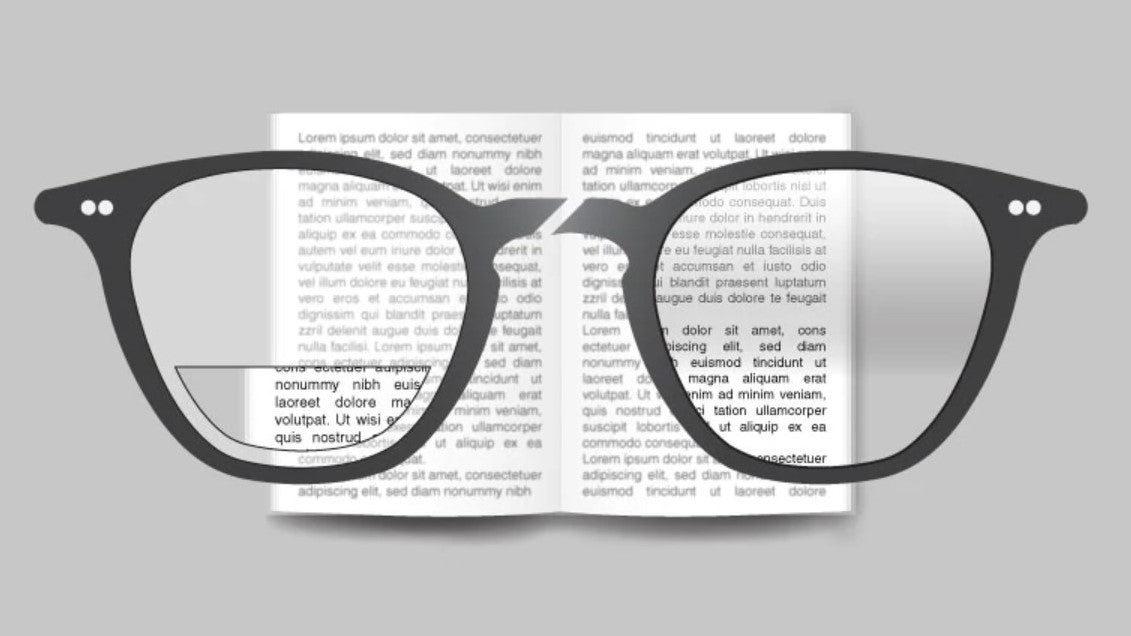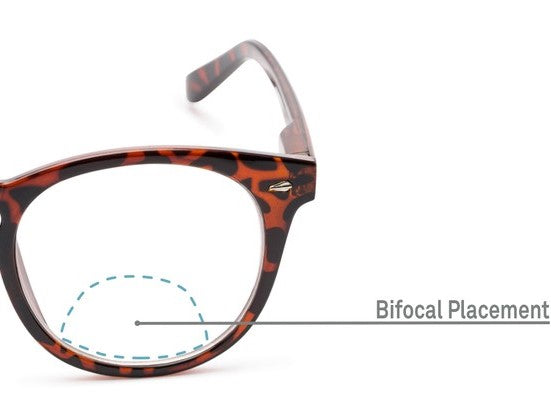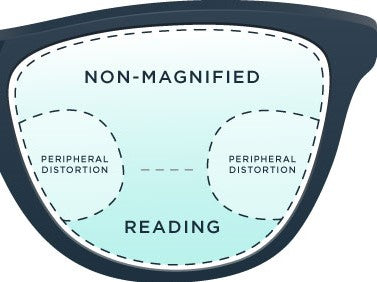If you consider bifocal lenses and are not a fan of the look of the line in the middle of your lenses, no-line bifocals can solve the problem perfectly. Actually, no-line bifocal readers are becoming more affordable and easier to find. Bifocal lenses are two different prescriptions in the same lens that help us see both near and far. There are multiple options for bifocal lenses, which include Inner Bifocals (with line and with ledge), Fused Bifocals (with line and without ledge), Blended Bifocals (without the line and without ledge), Progressive Lenses (without the line and without ledge). In the following parts, we will talk about no-line bifocals.
What Are Blended Bifocals?
Blended bifocal lenses are similar to inner bifocal lenses because the line of these lenses is placed on the inside of the lens. The difference in the blended bifocal lenses is that the line is “smoothed” out, think about buffing or sanding down a rough surface area. This makes the transition from the clear part of the lens to the reader part of the lens more gradual. The “line” will look a little blurry, but it is only about a millimeter so your eyes should be able to adjust relatively quickly. This is a good option for you if you do not want to see the line as much as you would with the inner bifocal option. Other people will not be able to see it, either.
What Are Progressive Lenses?
Progressive lenses are the true “no-line” lenses. They are “multifocal” lenses that eliminate bifocal and trifocal lines. They look exactly like single vision lenses. Progressive lenses have three main vision areas with different powers, the top of the lens, the middle of the lens, and the bottom of the lens. Because progressive lenses have multiple powers in the same lens, they must be the correct size vertically. This is called the vertical corridor. This corridor is where the intermediate vision is corrected. Because your lenses are fitted to your individual eyes using measurements, the corridor of progressive lenses will allow you to adjust the power naturally rather than trying to find the right lens to look through.
The Difference Between No-Line Bifocals and Progressive Lenses
- No-Line Bifocals
The no-line bifocals have two zones for seeing distance and reading. It is really easy to read with no-line bifocal readers. However, when you look from the distance to near, the transition feels a little bit like a jump. Because you go from no reading power to full reading power in an instant. That’s the limitation for the no-line bifocal reader. If your eyes can’t accommodate a bit anymore it could happen that you have a blurry gap in die distance of your car dashboard. The reading field is too powerful and your distance field also won’t let you see sharp. You must either go nearer or further away to see it.
- Progressive Lenses
For progressive lenses, the reading area depends on the ADD value. In most cases, you can expect a restrictive reading field that gives you 2-3 short articles in the newspaper. When you look from the distance to the near, the transition is very smooth. The reading power starts to add up the more you look down. With progressive lenses, you can see distance, read, and see everything in-between easily. So, progressive lenses are more convenient for daily use. However, there is still a limitation to the progressive lenses. Especially in the PC range and also in the close reading field the side is going to be blurry. Not a big deal for most people but you need to adjust to it.
As for no-line bifocal readers, this post from Koalaeye Optical has shown some information about no-line bifocals and progressive lenses. If you have any different ideas for bifocal lenses, share them in the comment zone. If you have any problems with glasses or sunglasses, please feel free to contact us via email at service@koalaeye.com and we will reply to you as soon as possible.





































